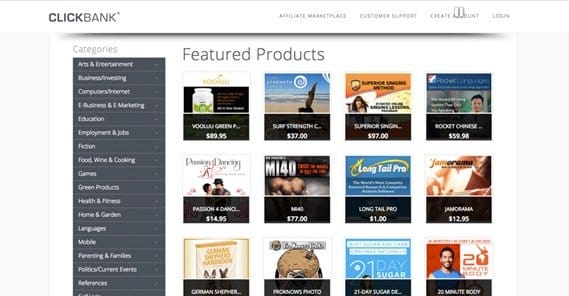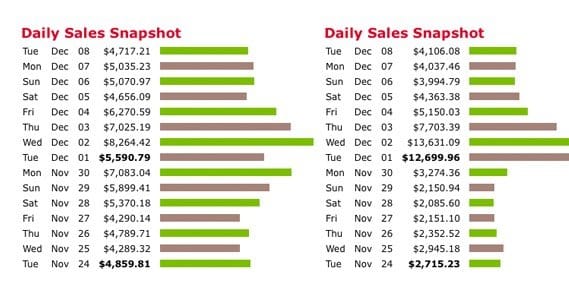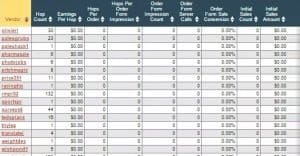Does ClickBank Still Work and Make Affiliates Money?

ClickBank is one of the larger affiliate networks out there, and it’s also relatively old, which means there are a ton of people who abjectly refuse to consider it anything other than a scam or a waste of time. Of course, the same can be said for Facebook advertising, and we all know that’s effective when used properly, so who do you believe?
Picture this scenario. A newbie marketer, fresh out of the BlackHatWorld mailing list and forums, signs up for ClickBank. They check out a few offers on the front page and see their low values. Skeptical, they shrug and throw up a basic site with a few pages of content and a few links to that offer. Then they go out and traffic from Fiverr or whatever the flavor of the week seller is on BHW. The traffic arrives, shrugs, and leaves. The marketer sees their expenses going down the drain without a single conversion to show for it, and decide the problem lies with ClickBank. They’ve converted themselves into an antiCB believer, and will happily tell you how it wasted their money when they tried it.
Savvy marketers will realize there are a number of flaws with this strategy. Let’s list off a few of them, shall we?
- The marketer only checked out basic offers on the front page. These offers will naturally tend to be lower value and high competition, because thousands of other novice marketers are doing the same thing.
- The marketer didn’t set up a robust site, they simply generated some basic content and hoped it would work as a test. Modern audiences are much more discerning than those in the past would have been.
- The marketer paid for views from a low quality source, and probably received as many bots as they did real people, and 90% of the real traffic was probably from India or somewhere completely disinterested in converting. They may have only spent $15 on traffic, but they got what they paid for.
- The marketer chose to blame their tools – the affiliate network specifically – rather than the mechanic. In their mind, they’ve done their reading, they’ve followed their guides; their technique isn’t in question.
The fact is, ClickBank is a perfectly valid affiliate network. The company is 18 years old and serves more than 1,500,000 affiliate marketers, there’s going to be a ton of competition for their offers. By that same token, though, no company could survive for that long and serve that many people if they did it by scamming people. It works, and anyone telling you it doesn’t either didn’t put in the effort to succeed themselves, or broke the terms of service and refuses to admit it.
The Pros and Cons of ClickBank
That’s not to say that ClickBank is a perfect network. On the one hand, they do have a lot of highly paid offers. They’re available in just about every country in the world, so affiliate marketers from Australia, Brazil, Peru, Vietnam, and a whole host of other countries can still use them, though their offer availability may be restricted. They also have a number of recurring offers, which we’ve written about here, so you already know how valuable they can be. They also handle a lot of technical aspects of affiliate marketing and make it easy to monitor how your links are performing without having to get really detailed with your own technical understanding.
On the other hand, because it’s one of the largest affiliate networks in the world, there are a ton of companies looking to shill low quality products or offering sub-par commissions on barely-profitable products, so you have to filter out a lot of the spam to get to the good stuff. Worse, with the competition you face, the best products are already going to have a lot of competition. You really need to either go at a product from a novel angle, or find products that have minimal competition due to their sub-par commissions. It’s also difficult to tell how well an offer is going to perform unless you have traffic to send to it, which typically means an initial investment many small-time marketers don’t have the leeway to spend.
Picking Products to Make Money
The amount of money you can make depends heavily on the product you choose. Something extremely high value is going to sell fairly rarely, so something with a low value that sells more often can out-perform it. However, stray too far in the other direction and you’ll be making a pittance even with 1,000 sales a day.
Clickbank provides some metrics for their products, so you should understand what they mean.
- Initial sale value: The amount of money you make for each sale, before upsells are factored in.
- Average sale percent: The amount of money you make per sale as a percent of the total sale price; the commission percentage.
- Gravity: The number of other affiliates who have sold at least one of the product in the last three months.
- Rebill metrics: Same as the first two, except relating to recurring commissions – resubscriptions, essentially.
So, a good product is one that has a low initial sale value, and has at least three ways to upsell the product. You want the low initial price to be enticing, but you want to have plenty of room to pitch additional upsells to make more money from each commission. This allows you to target multiple different types of people with your marketing as well.
A good product will also have a good landing page. Click through the link to see what sort of site you land on. Is it something you would feel comfortable buying from, or does it show signs of being poorly made or poorly optimized? Video sales and native content pages are good.
A good product should have good reviews online, so before you commit to pitching it as an affiliate, make sure it’s something people can get behind the idea of purchasing. Poorly reviewed products are going to turn people away, so you’ll make less money and have to deal with more refunds.
A good product should also, perhaps somewhat counter-intuitively, have a decent gravity score. Somewhere above 20 is good, though for lower value products, a higher gravity might be a better indicator. Essentially, a product with a low gravity score means it’s not selling, and you can be sure it’s not because no one is trying to advertise it. If the gravity score is too high, it might indicate stiff competition, but it might also indicate such a large audience that even a newcomer can make some money. Higher gravity is better than lower gravity, all things considered.
I can’t really give you any more specific advice than that. It all comes down to the sort of resources you have in place already, the budgets you have to throw at traffic generation and content creation, the kinds of products you’re interested in promoting, and what you can dig up in the vast ClickBank catalogs.
Tips for Making Real Money with ClickBank
I’m not going to walk you through the affiliate marketing process from step one on. You should already know how the whole thing generally works, the importance of accurate tracking, and so forth. Instead, I’m going to give you a selection of tips for success, and mistakes to avoid.
First of all, ditch the banners. Tacking on a barely-relevant banner in an article isn’t going to give you much value. They’re obviously ads, so most people will simply tune them out. The majority of your conversions are going to come from specific tailored content with links in the content itself.
It’s all about pre-selling. Pre-selling is the art of recommending a product long before you actually get around to trying to sell it. It would be like if the last paragraph of this article included an affiliate link for signing up to ClickBank. It doesn’t, but that’s the sort of value-filled lead-up you need.
Content is crucial, then. Every product you want to pitch needs at a bare minimum one lengthy post pre-selling the product. Ideally, you’ll have a selection of related products, and a reasonably large site dedicated largely to pre-selling the entire industry, and the specific products as well. The most common form of this is the review site. Reviewing each product, posting about industry news, usage tutorials, and that sort of content gives the value and the pre-sell, and the actual links in each post do the selling. Reviews need to be written well, though.
Above all, you need value. The front end of your website, the stuff people are most likely to see when they first show up, should be largely free of CTAs and pitches. You’re not pushing sales content, you’re pushing value. Why? People share value. Very rarely will you see an affiliate article laced with links or banners go viral on a site like Facebook. Meanwhile, value-filled non-sales content will be shared around like hotcakes, if hotcakes were a thing people shared.
To insulate your funnel and build an exclusive audience, you double down on the value of the content and start building a mailing list. This comes at the problem from two angles. Your website will have some – maybe 15-20% – content designed to sell. The rest of it is designed for value and to get people to opt in to your mailing list. Then you can pitch other offers directly through email, or through email and a landing page, for those who are interested in what you have to sell and who trust you as a provider of value.
Of course, content marketing is its own huge industry, and many affiliate marketers quickly realize just how much work it can be. Producing content is either very time consuming or very expensive, depending on how much you outsource and how good you want it to be. Frankly, the era of the 5-page microsite is over. It’s very rare that an affiliate marketer can succeed with those kinds of sites, and it’s generally because of sheer volume that they can manage it at all.
You can grease the wheels a little by offering something of perceived immense value for free. Typically, this will be something related to the products you’re pitching, but not reliant on your affiliate to provide. Ebooks are the go-to product here. If you’re pitching weight loss supplements, a diet plan book or an exercise plan book might convert well. You use this for two purposes. For one, to claim the book, users need to opt in to your list, for exposure to future marketing. For two, the book itself can contain your affiliate links.
The book, then, needs to pitch one of your affiliate products. It needs to explain that it alone can’t provide the results the user is looking for, it can only give them a framework to begin. What they really need is your affiliate product, if they want to truly succeed. That way you put pressure on them to finish up the value they’ve already received, to prevent “wasting” it.
On top of all of this, you should be tracking your traffic. You do this so that you can remarket to your visitors. These are people who were interested enough to click through to your site, but not enough to convert. Of that audience, yes, plenty of them won’t be interested and will ignore future attempts to reach them. Others, though, might just have been busy or distracted, and would convert given the opportunity at a more convenient time. That’s what you do; you reach out to them at a more convenient time.
All of this combined can get you a very solid foundation for success with ClickBank, but at the end of the day it all relies entirely on how much motivation, energy, and money you have to bring to bear on the problem. In other words, it’s up to you.
 ContentPowered.com
ContentPowered.com









Where did you get those income screenshots from?